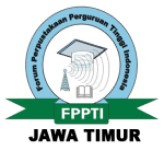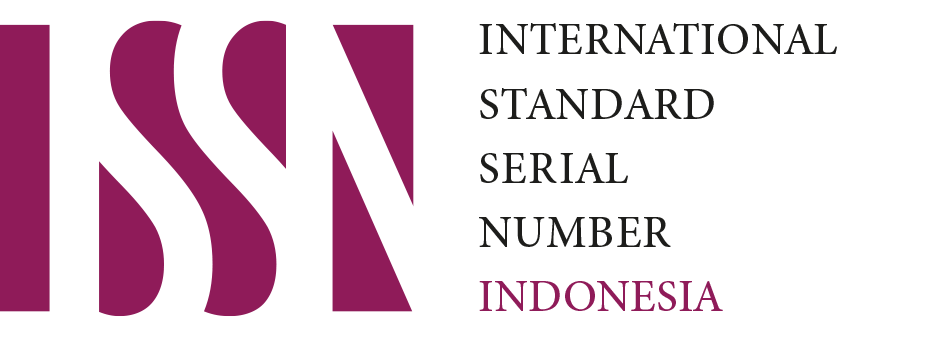Documenting disaster in Yogyakarta
A case study of earthquake on May 27 th, 2006
Downloads
Background of the study: The documenting of disasters through oral history programs carried out by educational institutions, archival institutions, memory institutions, and archival activists in the last few decades has begun to develop. The factors that have strongly led to the emergence of this phenomenon refer to the awareness of the importance of preserving information and historical awareness related to the shaping of memory.
Purpose: This study analyzes the contribution of oral history archives in forming social memory related to the Yogyakarta earthquake on May 27th, 2006, in a more communicative and creative dimension.
Method: This research is qualitative research conducted through interviews, observations, and literature studies
Findings: The Yogyakarta earthquake on May 27, 2006, has been placed in social memory through oral history archives and media reports that are remembered in social reality. Oral history archives are also presented creatively and collaboratively as a form of public history through Archival Dioramas at the Dinas Perpustakaan dan Arsip Daerah Daerah Istimewa Yogyakarta. The results of victims' experiences in oral history re-interviews can be analyzed in the context of the resilience of social memory.
Conclusion: The emergence of digital equipment impacts people's interest, awareness, and motivation to engage in disaster documentation, shaping social memory in Yogyakarta.
Downloads
Aisyiyah, B. M., & Ganggi, R. I. P. (2019). Dinamika Pelestarian Surat Kabar Kedaulatan Rakyat Koleksi Jogja Library Center. Jurnal Ilmu Perpustakaan, 7(1), 41-50. Retrieved from: https://ejournal3.undip.ac.id/index.php/jip/article/view/22812
Asmiyanto, T. (2019). Metamorphosis of Archivists in The Era of Industry 4.0: Challenges in Facing the Digital Revolution. Record and Library Journal, 5(1), 12–21. https://doi.org/10.20473/rlj.V5-I1.2019.12-21
Benoit, E., III, & Eveleigh, A. (2019). Participatory archives: theory and practice. Facet Publishing
Bramantya, A. R., Waluyo, Darajat, I. R., Mulya, L., & Ridwan, A. N. (2021) Engaging Students in Oral History in the Archival Science Study Program, Vocational College, Universitas Gadjah Mada. Journal of Archival Organization, 18(3-4), 130-146. Doi: https://doi.org/10.1080/15332748.2022.2110551
Chand, A. (2021). Same Interviewee, Different Interviewer: Researching Intersubjectivity in Studies of the Reserved Occupations in the Second World War. The Oral History Review, 48(1), 3-19. Doi: 10.1080/00940798.2021.187960
Cramer, J. A. (2020). “First, Do No Harm”: Tread Carefully Where Oral History, Trauma, and Current Crises Intersect, The Oral History Review, 47(2), 203-213. Doi: 10.1080/00940798.2020.1793679
Daulay, H. (2011). Memahami penulisan artikel di Harian Kedaulatan Rakyat. Jurnal Dakwah, 11(1), 53-68.
Gerster, J., & Maly, E. (2022). Japan’s Disaster Memorial Museums and Framing 3.11: Othering the Fukushima Daiichi nuclear disaster in cultural memory. Contemporary Japan, 34(2), 187-209. Doi: https://doi.org/10.1080/18692729.2022.2112479
Gusmian, I. (2019). Earthquakes in Javanese theological interpretation: The study of Serat Primbon manuscripts from the Yogyakarta Sultanate Palace. Sustinere: Journal of Environment and Sustainability, 3(2), 75-89. Doi: https://doi.org/10.22515/sustinere.jes.v3i2.79
Handajani, S. (2020). “Corona dan Hierarki Informasi” dalam Suwignyo, A. (ed.). Pengetahuan Budaya dalam Khazanah Wabah. Yogyakarta: UGM Press.
Haunton, M., & Salzedo, G. (2021) “A duty, an opportunity, and a pleasure”: connecting archives and public history. Archives and Records, 42(1), 40-57. DoiI: 10.1080/23257962.2020.1843417
Leahy, C. P & Gay. C. (2024) Care and crisis: disaster experiences of Australian parents since 1974, The History of the Family, 29(1), 131-156. Doi: 10.1080/1081602X.2023.2278161
Lee, A. P. & Springer. K. (2020) Socially Engaged Oral History Pedagogy amid the COVID-19 Pandemic, The Oral History Review, 47(2), 227-239. Doi: 10.1080/00940798.2020.1793678
Maynor, A. (2016). “Response to the Unthinkable: Collecting and Archiving Condolence and Temporary Memorial Materials Following Public Tragedies,” in Handbook of Research on Disaster Management and Contingency Planning in Modern Libraries, ed. Emy Nelson Decker and Jennifer A. Townes (Hershey, PA: IGI Global), https://trace.tennessee.edu/cgi/viewcontent.cgi?article=1014&context=utk_libpub
Mulya, L., & Bramantya, A.R. (2021). Program Sejarah Lisan dan Budaya Recordkeeping dalam Perspektif Kearsipan. Jurnal Diplomatika, 4(2), 99-111. Doi: https://doi.org/10.22146/diplomatika.6819599
Nazaruddin, M. (2023). Contestations of cultural memory at a disaster monument: the case of the Aceh Tsunami Museum in Indonesia> Social Semiotics, 33(3), 560-579. Doi: https://doi.org/10.1080/10350330.2021.1900721
Nurfiantara, W., & Mirmani, A. (2022). Service Excellence in University Archive of Universitas Indonesia: A Kanban Approach. Record and Library Journal, 8(1), 99–108. https://doi.org/10.20473/rlj.V8-I1.2022.99-108
Palista, D., Samosir, F. T. ., & Sa’Diyah, L. . (2023). Analysis of Depreciation of Archives in The Central Khazanah Archives. Record and Library Journal, 9(1), 13–24. https://doi.org/10.20473/rlj.V9-I1.2023.13-24
Reid, A. (2015). History and Seismology in the Ring of Fire: Punctuating the Indonesian Past. In D. Henley & H. S. Nordholt (Eds.), Environment, Trade and Society in Southeast Asia: A Longue Durée Perspective (pp. 62–77). Brill. Retrieved from: http://www.jstor.org/stable/10.1163/j.ctt1w76vg1.8
Retting, P. J. (2019). Documenting Disasters: A Focus on Floods. Journal of Western Archives, 10(2), 1-19. Doi: https://doi.org/10.26077/39ab-252b
Soetomo, I. (2020). Direktori: Peta Kolektif Indonesia 2010-2020. Jakarta: whiteboardjournal.com dengan British Council
Supartoyo, Abdurahman, O.,& Kurnia, A. (2016). 10 tahun gempa Yogyakarta. Geomagz, Vol. 6. No. 2
Natawidjaja, D. H. (2016). Misteri patahan sumber gempa Yogya 2006. Geomagz, Vol. 6. No. 2
Sucha-Xaya, Naya. (2022). Documenting Events in Times of Crisis: Investigating Traditional and Contemporary Thai Archival Practices. Archivaria, 93, 42-71. Retrieved from: https://archivaria.ca/index.php/archivaria/article/view/13835
Sugiyono. (2014). Metode Penelitian Kuantitatif, Kualitatif, dan R&D. Bandung: Alfabeta.
Suwignyo, A. (2019). A Tsunami-Related Life History of Survivors in Banda Aceh, Indonesia and Sendai, Japan. Jurnal Ilmu Sosial dan Ilmu Politik, 23(2), 120-134. Doi: https://doi.org/10.22146/jsp.49876
Tapsell, R. (2019). Kuasa Media di Indonesia, Kaum Oligarki, Warga, dan Revolusi Digital. Tangerang Selatan: Marjin Kiri.
Tulius, J. (2020). Lesson From The Past, Knowledge For The Future: Roles Of Human Memories In Earthquake and Tsunami Narratives In Mentawai, Indonesia. Paradigma: Jurnal Kajian Budaya, 10(2), 147-168. Doi: http://dx.doi.org/10.17510/paradigma.v10i2.396
Zahara, N. R., & Salim, T. A. . (2022). Preservation of Digital Archives: Systematic Literature Review. Record and Library Journal, 8(2), 285–297. https://doi.org/10.20473/rlj.V8-I2.2022.285-297
Copyright (c) 2024 Arif Rahman Bramantya, Sugiharto, Lillyana Mulya

This work is licensed under a Creative Commons Attribution-ShareAlike 4.0 International License.
Record and Library Journal by Unair is licensed under a Creative Commons Attribution-ShareAlike 4.0 International License.
1. The journal allows the author to hold the copyright of the article without restrictions.
2. The journal allows the author(s) to retain publishing rights without restrictions
3. The legal formal aspect of journal publication accessibility refers to Creative Commons Attribution Share-Alike (CC BY-SA).
4. The Creative Commons Attribution Share-Alike (CC BY-SA) license allows re-distribution and re-use of a licensed work on the conditions that the creator is appropriately credited and that any derivative work is made available under "the same, similar or a compatible license”. Other than the conditions mentioned above, the editorial board is not responsible for copyright violation.


 57201398420
57201398420

























